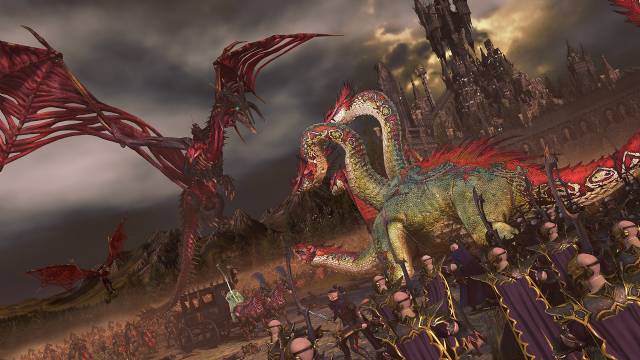From the fusion of two worlds a mortal danger is born
Before beginning the analysis of Total War: Warhammer II – Mortal Empires (only Mortal Empires now on for synthetic sake), some technical specification of this expansion. Free-LC, as the term itself says, is completely free, only available to players who own both the first and the second episode and takes into account the various DLCs purchased over time. This means that, for example, if you do not have in your Call of the Beastmen library , you will not be able to use the
Bercianti and Beast Men tribes during the mainstream campaign and in personalized battles. As far as it may seem to be penalized, this is an obvious and more comprehensible choice from Creative Assembly. Also, to play aMortal Empires , you do not have to
install eitherTotal War: Warhammer or Total War: Warhammer II , but just have the same hard disk on it. What stands out in Mortal Empires , even before the campaign begins, is its content. Every year I have the same feeling when I’m in front of Football Manager and fixed for the whole minute of the screen, undecided about which team to choose: the same thing I have tried before selecting the faction in Mo
rtal Empires, because the campaign puts in place all 35 lords scattered between the two chapters, which can swing down depending on the DLC possessed. Of course, all races, heroes, and factions are also available for custom battles, as well as for online cha
llenges and this abundance opens up horizons and combinations that are still unexplored. Not all content so far reached for the two Total War: Warhammer finds space at the time of the launch of Mortal Empires: Creative Assembly has specified that the Norsca factions will be added with a subsequent patch, as it will take some time to reach a better balance between the units, given the absence of the Fundation Update and the infinite crosses that it staged this expansive expansion.
Bigger is better
Mortal Empires is the son of Total War: Warhammer and Total War: Warhammer II, but it resembles much more to this second parent. The various gaming interfaces, menus and options adopted in this DLC take on the added enhancements in th
e last chapter, starting with the choice of the starting faction, a more dynamic and engaging menu. Even in the campaign itself, the solutions are the same ones that are embraced in the second iteration and this is certainly a winning choice, given the greater fluidity in the shift between shifts, with alarms that open in real time and with diplomatic relations that are not are delayed at the end of the upload. In addition, all the UIs have benefited from a complex update, even those linked to the factions of the Old World, as well as how to display the map, entrusted with a practical zoom
and capable of switching from micro to macro in a few scrolls, without losing details and graphic embellishments. Many of the building chains have also been revised, with new buildings being added to the cities of the Old World, and enriched with ad hoc structures to highlight some peculiarities typical of the most well-known settlements such as Altdorf or Karaz-a- Karak. Other introductions were made withTotal War: Warhammer II , such as sea storms and wreckage scattered around the Great Ocean, capable of giving you bonus bonuses and a precious spring for exploration.
Exactly, exploration. The pleasure of the discovery and the desire to push the troops into the more remote corners of the map are the two true added values of this DLC: the map of Mortal Empires is really huge, with almost 300 provinces – just think the first
Total War: Warhammer it had “just” 140 – subdivided into completely conquered regions: even in the Old World they have missed those boulders which prevented, for example, the faction of the Empire from occupying the niches, but the climatic characterization of the areas Total War: Warhammer II.

